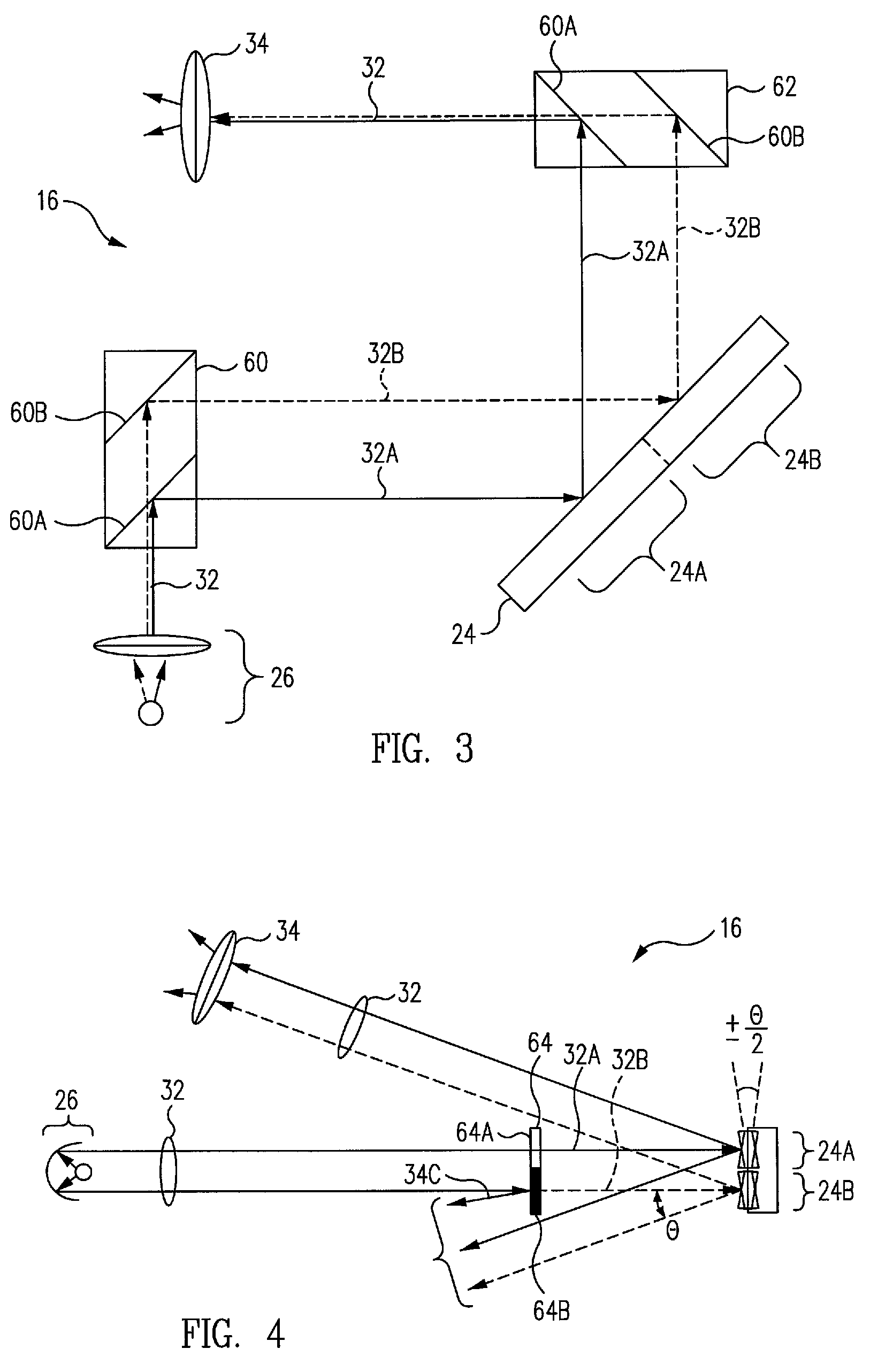Adaptive and interactive scene illumination
a technology of interactive lighting and scene illumination, applied in the field of methods and equipment, can solve the problems of requiring the participation of highly skilled lighting technicians, requiring relative crude and imprecise techniques, and requiring time-consuming
- Summary
- Abstract
- Description
- Claims
- Application Information
AI Technical Summary
Benefits of technology
Problems solved by technology
Method used
Image
Examples
Embodiment Construction
[0022]FIG. 1 is partial perspective view of an exemplary embodiment of an adaptive, interactive lighting (“AIL”) system 10 in accordance with the present invention, shown projecting light onto an individual field of view (“IFOV”) 12 of an illuminating field of regard (FOR) 14 encompassing a field or scene (not illustrated) that is to be illuminated by the system. It should be understood the illuminating FOR 14 is two-dimensional in nature, whereas, the particular field or scene onto which the FOR maps is typically three-dimensional in nature. As illustrated in the figure, the exemplary system comprises an illumination projector 16, an imaging camera 18, and an image processing electronics unit 20, including an image processor, e.g., a digital signal processor (“DSP”). Optionally, the system may also include an associated computer 22, e.g., a laptop computer, for human-interactive programming and / or control of the image processor of the system in real time, as described below.
[0023]A...
PUM
 Login to View More
Login to View More Abstract
Description
Claims
Application Information
 Login to View More
Login to View More - R&D
- Intellectual Property
- Life Sciences
- Materials
- Tech Scout
- Unparalleled Data Quality
- Higher Quality Content
- 60% Fewer Hallucinations
Browse by: Latest US Patents, China's latest patents, Technical Efficacy Thesaurus, Application Domain, Technology Topic, Popular Technical Reports.
© 2025 PatSnap. All rights reserved.Legal|Privacy policy|Modern Slavery Act Transparency Statement|Sitemap|About US| Contact US: help@patsnap.com



